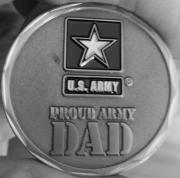First time purchasing commercial reloads. Thought I'd give Freedom Munitions a try, since the price was right. I'm in the process of inspecting the shipment I received yesterday and had a few questions for the experts. I've never reloaded myself, but I'm a wiz with calipers and understand the basics/math/chemistry.
Visual... Inspecting cases for deformities, bulges, etc., setback, improper/angled set, flush/straight primers.
Measuring... Case diameter, OAL (COL).
Q1: According to Hodgdon, COL should be 1.125" (1-1/8"). I'm measuring consistently 1.113" - 1.115" actual (180gr Flat point FMJ, unknown bullet manufacturer). Anything to be concerned about here?
Q1a: What range of COL is acceptable?
Q2: When verifying case diameters, where is the proper place to measure? I assume I'm looking for cases to be straight and should be measuring at neck, middle and bottom, expecting to see the same number +/- a few thousandths.??
Q2b: What range of case diameter is acceptable? Hodgdon is silent re: brass diameter, I assume because different mfrs will use different alloys with slightly different thicknesses, but I would assume the finished OD (outer diameter) would need to be appropriate for the barrel/caliber(?). I'm seeing head stamps from a wide range of mfrs throughout the batch but OD's are consistently 0.420" +/- 0.001"
Anything else I should be inspecting for?
Thanks.!
ETA: I have a postage scale and a dietary scale... Not sure either will be accurate enough to confirm powder loads.



 Reply With Quote
Reply With Quote



